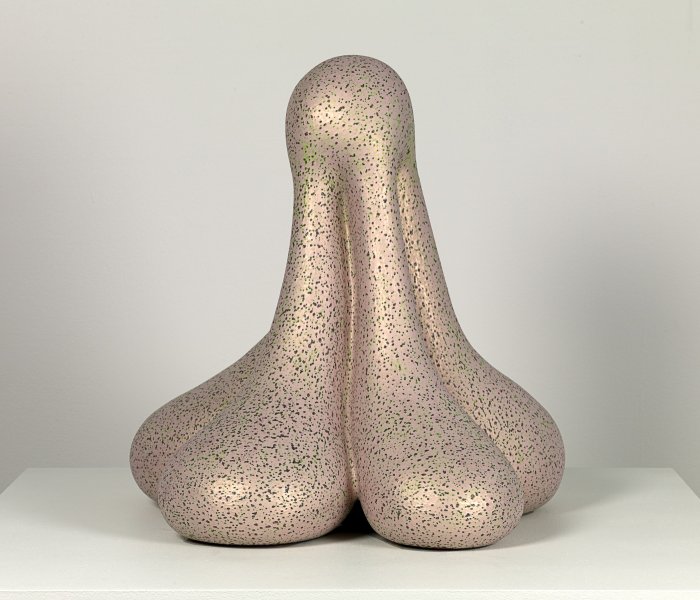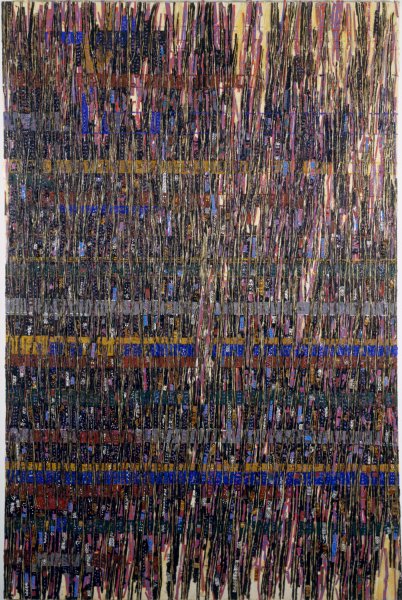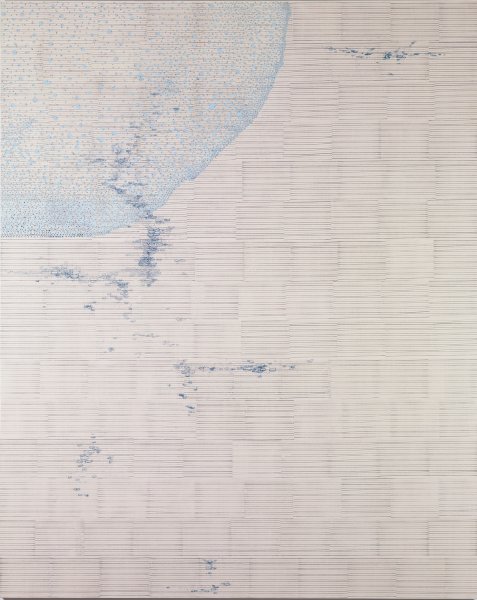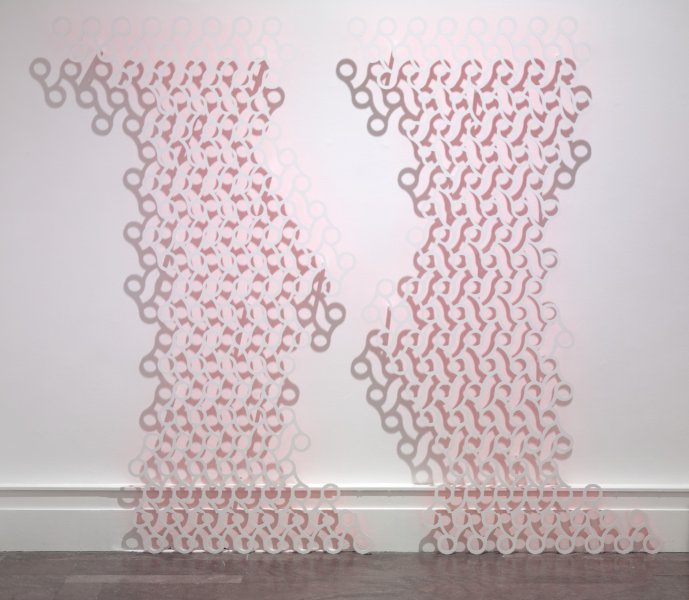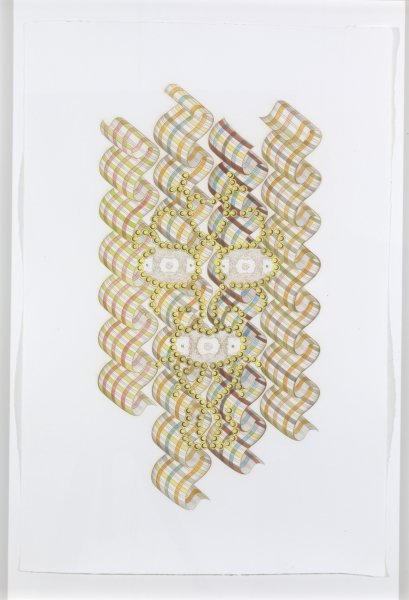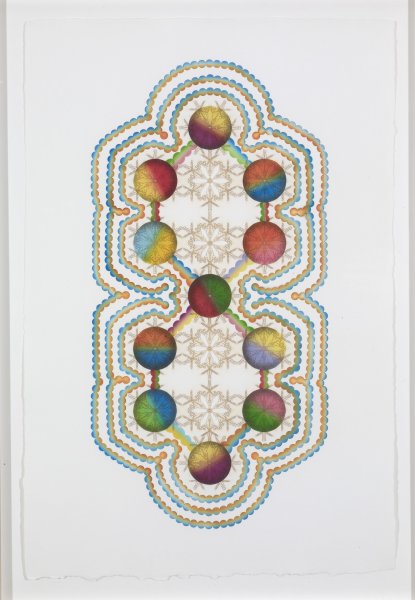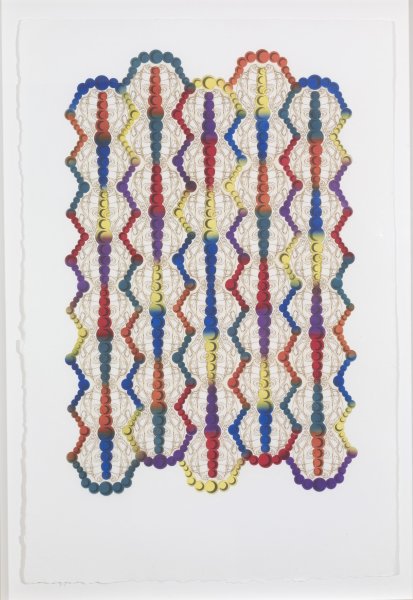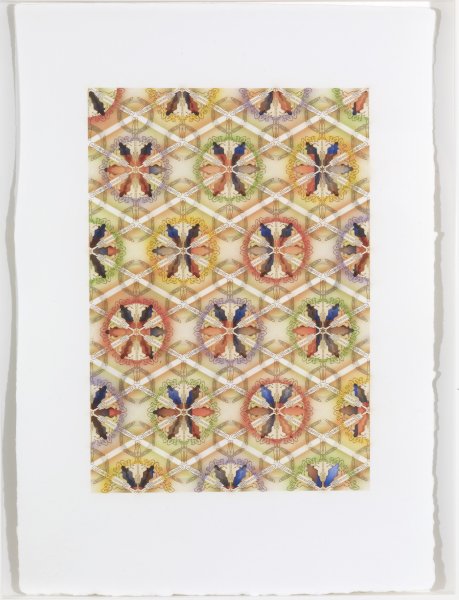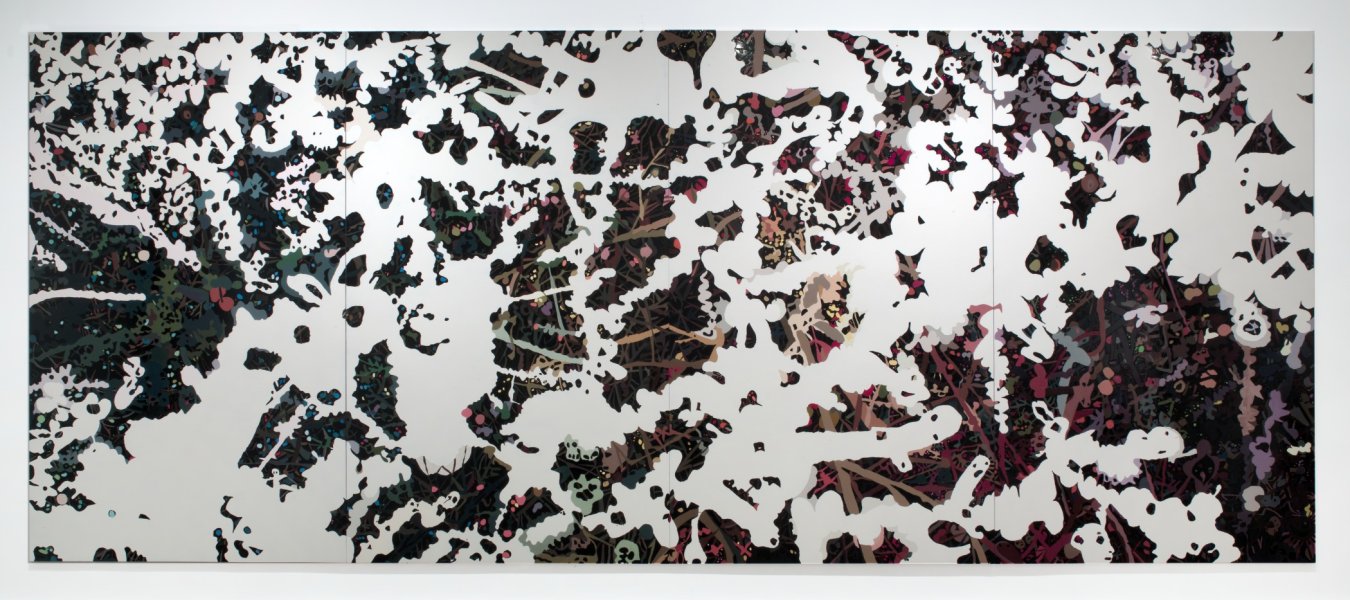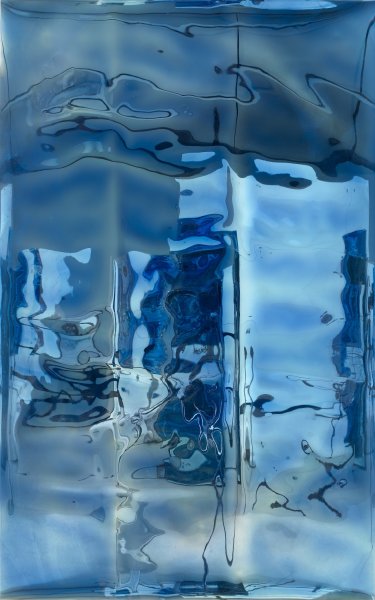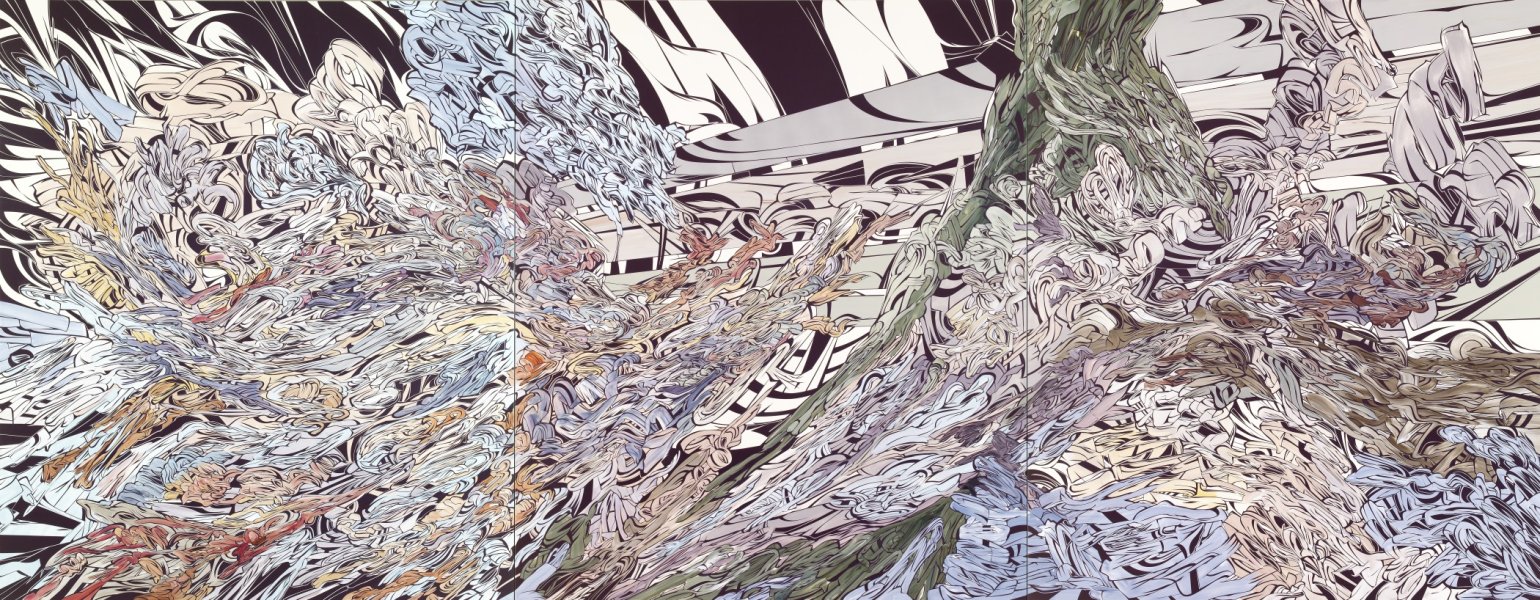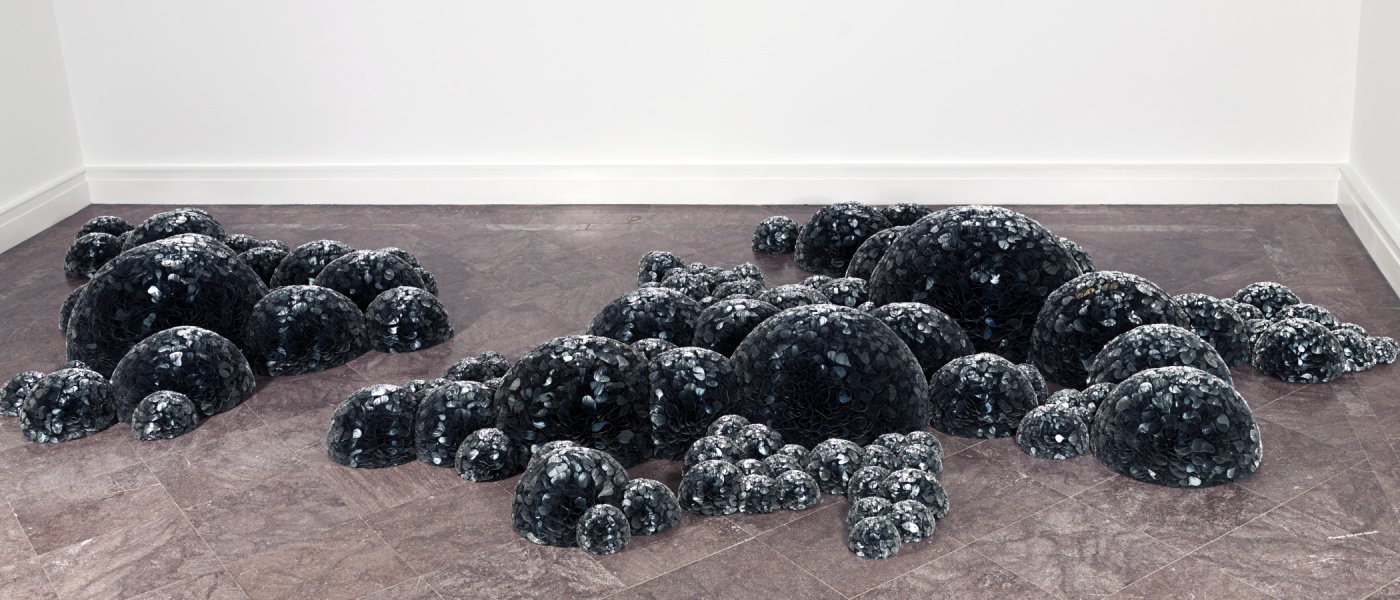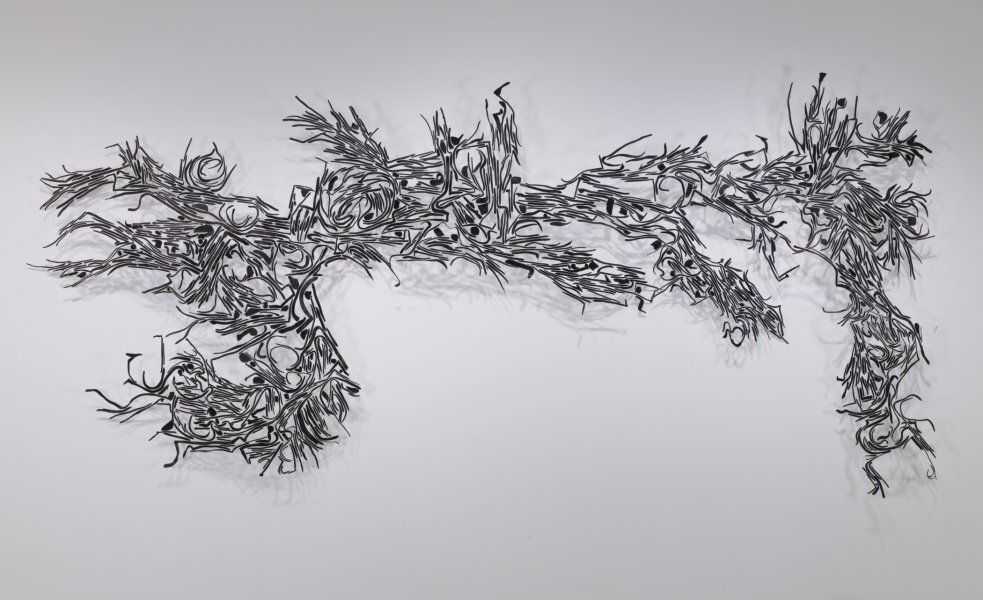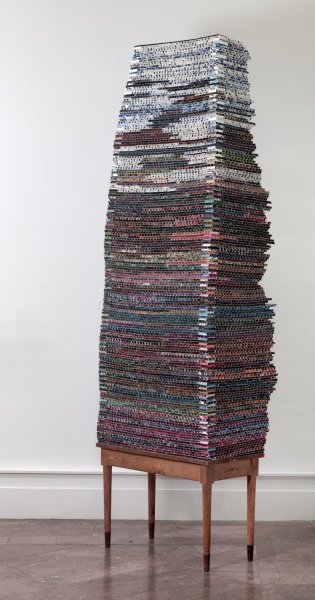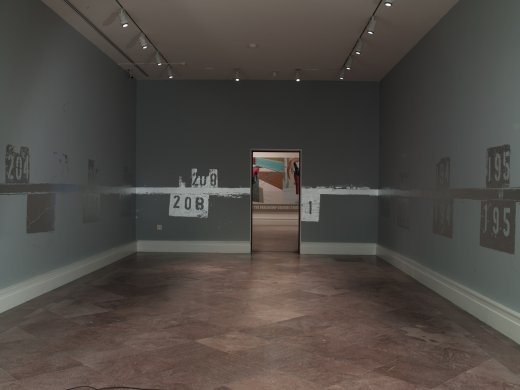Topographies
Friday, November 13, 2009–Sunday, February 28, 2010
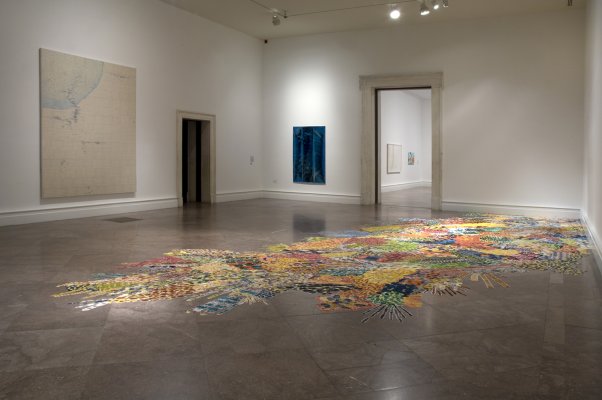
Installation view of Topographies, with Polly Apfelbaum's Reckless, 1998, in the foreground. Photograph by Tom Loonan.
1905 Building
Topography, the practice of creating detailed maps or charts that define the terrestrial characteristics of a singular locality, was originally conceived by ancient cultures as simply “the study of place.” Customarily, topographical mapping and the study of topography result in large-scale, detailed, and carefully calibrated representations of nature’s nuances in relief. Unlike traditional maps, topographical maps utilize contour lines, and they also explore both natural and man-made features, taking into account not only vegetative and human-made features, but also local history and culture. All surfaces and aspects of a given terrain are explored; however, it is not just the three-dimensional qualities that are represented, but also the deception of these features that are concurrently discovered and exposed.
Topographies drew its inspiration from the definitive aspects of topographical mapping by shedding light on artists who employ a visual language that oftentimes blurs the boundaries between the natural and man-made, while paying specific attention to detail, surface, and depth of imagery. Culled from the Albright-Knox’s collection, the exhibition featured works by Polly Apfelbaum, Jane Callister, Tara Donovan, Teresita Fernández, Mark Fox, Ellen Gallagher, Udomsak Krisanamis, Heather McGill, Jorge Pardo, Emilio Perez, Ara Peterson, Ken Price, Clare Woods, and Carrie Yamaoka.
From romantically abstract landscapes to layered imagery that explores the underbelly of natural forms, this exhibition complemented Ingrid Calame: Step on a Crack . . . . Calame’s work, an inspired version of a topographical map, traces man-made stains and marks to create abstract and richly layered paintings and drawings.
This exhibition was organized by Associate Curator Holly E. Hughes.
